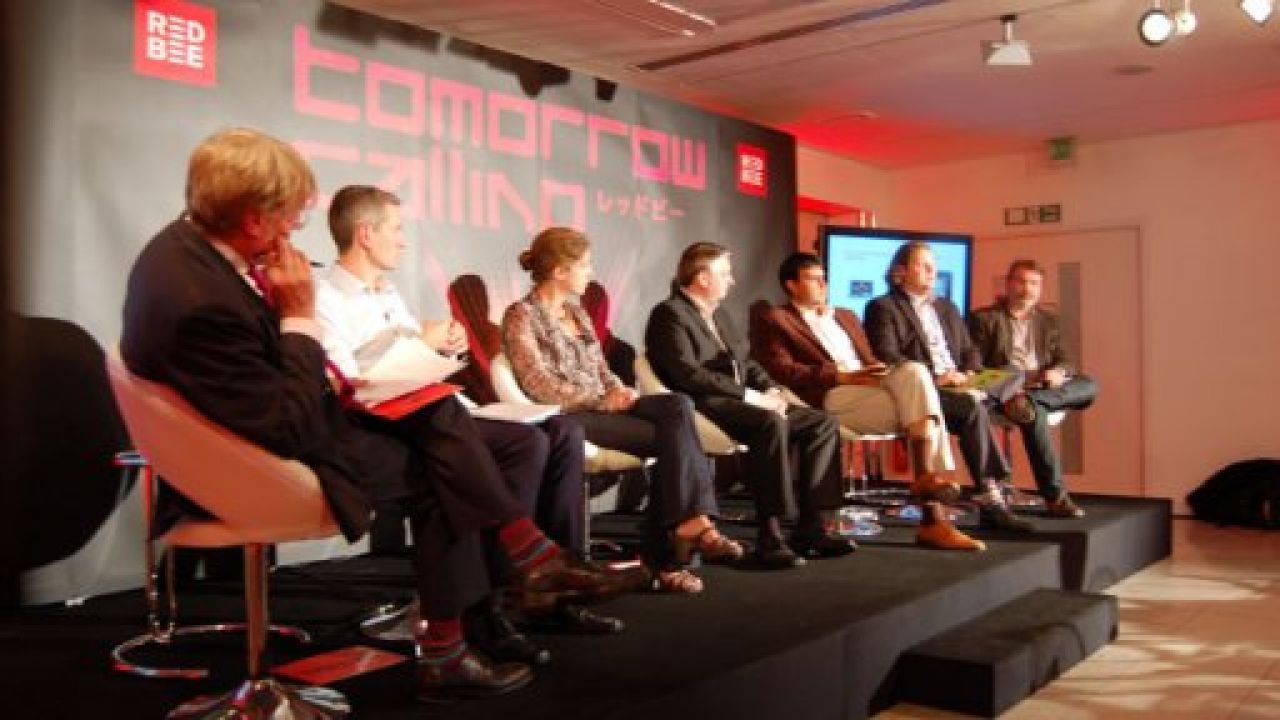Steve Plunkett, Director of Technology and Innovation at Red Bee Media gives his view following the inaugural Tomorrow Calling panel debate.
The first debate ‘Networks, platforms and devices’ offered tremendous insights into the future of media. What is certain is that media and technology are not standing still, quite the opposite; they’re ushering in new opportunities for both new and established concepts and businesses.
The first and foremost trend to emerge from the project is one of change, and that the pace of change is accelerating. For many years, the broadcasting market was relatively stable – picture quality improved steadily, analogue transmission networks became more efficient.
During the course of the last decade in particular, the pace of change accelerated dramatically. The last year alone saw major innovations including Freeview HD, the launch of 3D, Apple’s iPad, Virgin TiVo boxes and the launch of connected TVs by several major manufacturers.
A second finding is that the TV set is to evolve, and potentially radically. It has long been the main source of screen-based entertainment in the vast majority of households and this seems likely to continue. We’re going to see even larger screens and even higher resolution as SuperHD and 8k start to appear, with glassless 3D also set to enter the mainstream later in the decade. We can also expect a steady roll-out of new standards for interoperability between TVs and connected devices, as well as the proliferation of PVR functionality in TVs and set-tops.
By 2020 we’ll be reaching the limits of current screen technologies and will start to see new technologies entering the market including plastic electronics and large-screen OLED displays.
Thirdly, connectivity has a major role to play. Perhaps most importantly as our TVs become connected to the internet and to other devices, they will also evolve to incorporate a host of new content, services and experiences, further cementing their position in the home.
The fourth trend is for the proliferation of devices. Viewing on mobile devices is set to increase rapidly – smartphones and tablets will become cheaper, more powerful, and will provide consumers with a richer range of experiences.
Ultimately tablets will have the biggest impact on the way that media is consumed. We can expect to see greater choice, with tablets bundled with other products and services.
Broadcasting is set to collide with computing and the internet – and, as it does, software and applications are likely to play a far more fundamental role in the development of the industry, proliferating across connected devices.
Today, apps are fast becoming a necessity for content providers and this is the fifth trend to emerge. In the next ten years, more and more content will be consumed on tablets and smartphones, putting more pressure on broadcasters and other media owners to manage services across multiple devices.
Synchronised applications will become a much more important feature of the market, and this will open up creative and commercial opportunities for broadcasters and media owners. However, consumers will prefer for interactivity to happen primarily on companion, connected devices, rather than directly on TV sets. If this is the case, then the TV app market may never take off in the same way as the mobile market.
The overall consensus, as the seventh learning, is one of relative stability within this picture of change for the digital pay-TV market with stickier offers limiting movements between platforms or away from pay-TV.
What is clear from the project to date is that few believe that broadcasting is dead. Broadcasting seems set to remain central, despite the proliferation of IP connectivity across the market, supported by an enduring demand for live content and its attractive economics as a distribution platform. However, cloud-based offerings and in-home media storage will have a significant impact on the market during the next 10 years, creating new options for distributing, consuming and interacting with content.
We are entering an exciting era, with new technologies and software developments opening up new ways to engage consumers in broadcast and video content, across multiple platforms. We believe that linear television will continue to thrive; but new technologies also allow for disruption and potentially give a foothold to new entrants.
If you missed the first panel debate ‘Networks, platforms and devices’, chaired by Raymond Snoddy, access the archived video at www.redbeemedia.com/insights/tomorrow-calling
Tomorrow Calling offers a unique glimpse into an exciting future. Next we look to the project future consumer behaviour and then we will turn to investigate effective business models for 2020.
Steve Plunkett, Chief Technology Officer

